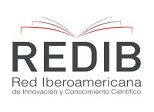Prevención de la Endoftalmitis en Cirugía de Catarata por Técnica de Facoemulsificación en Las Tunas, Cuba
DOI:
https://doi.org/10.69890/hallazgos21.v2i2.154Resumen
Fundamento: El tratamiento de la catarata es quirúrgico, y es exitoso ya que permite restaurar la visión del paciente; sin embargo, no está exenta de riesgos y complicaciones como la endoftalmitis postquirúrgica.
Objetivo: Describir la efectividad del tratamiento profiláctico para prevenir la endoftalmitis aguda posterior a la cirugía de catarata en el Centro Oftalmológico de Las Tunas, Cuba.
Método: Se realizó un estudio descriptivo, longitudinal retrospectivo de los pacientes operados de catarata pre senil o senil por técnica de facoemulsificación, en el período de enero a diciembre de 2016, en el Centro Oftalmológico de Las Tunas. La muestra estuvo compuesta por 91 pacientes que fueron sometidos a tratamiento quirúrgico por facoemulsificación luego de emitir su consentimiento para participar en la investigación; se utilizó el colirio de povidona iodada al 1.25% en el preoperatorio y al finalizar la cirugía se dejó povidona iodada al 5% en saco conjuntival, así como introducir una bula de aire en cámara anterior del ojo operado.
Resultados: No se hallaron casos de endoftalmitis post cirugía de catarata en los ojos intervenidos por facoemulsificación. Las complicaciones atribuibles al tratamiento fueron la conjuntivitis química 3, queratitis epitelial 2 y bloqueo pupilar 1.
Conclusiones: Hubo una buena efectividad y seguridad del tratamiento con el uso de colirio de povidona iodada al 1.25%, así como por introducir una bula de aire en CA sumado al tratamiento profiláctico de la endoftalmitis.
Palabras Clave: Endoftalmitis; povidona yodada; bula de aire; facoemulsificación.
Abstract
Background: The treatment of cataract is surgical and it is successful since it allows restoring the patient's vision; however, it is not free from risks and complications such as postoperative endophthalmitis.
Objective: To describe the effectiveness of prophylactic treatment to prevent acute endophthalmitis after cataract surgery at the Ophthalmologic Center in Las Tunas, Cuba.
Method: A retrospective longitudinal descriptive study of patients operated on with pre-senile or senile cataract was performed by phacoemulsification technique, from January to December, 2016, at Las Tunas Ophthalmological Center, Cuba. The sample consisted of 91 patients who underwent surgical treatment by phacoemulsification after their consent was given to participate in the research; povidone iodine eye drops were used at 1.25% in the preoperative period and, at the end of surgery, povidone iodine 5% in the conjunctival sac was inserted, as well as an air bleb in the anterior chamber of the operated eye.
Results: No cases of endophthalmitis after cataract surgery were found in the eyes operated by phacoemulsification. Complications attributable to treatment were chemical conjunctivitis 3, epithelial keratitis 2 and pupillary block 1.
Conclusions: There was good efficacy and safety of the treatment of endophthalmitis in patients undergoing cataract surgery by phacoemulsification.
Keywords: Endophthalmitis; povidone iodine; air bleb; phacoemulsification.
Citas
Ahmed, Y., Scott, I. U., Pathengay, A., Bawdekar, A., & Flynn Jr, H. W. (2014). Povidone-iodine for endophthalmitis prophylaxis. American journal of ophthalmology, 157(3), 503. Recuperado de: Academic Search Premier. Recuperado de: https://www.ncbi.nlm.nih.gov/pubmed/24528933
Cao, H., Zhang, L., Li, L., & Lo, S. (2013). Risk factors for acute endophthalmitis following cataract surgery: a systematic review and meta-analysis. PloS one, 8(8), e71731. Recuperado de: http://journals.plos.org/plosone/article?id=10.1371/journal.pone.0071731
Carron, A., Samudio, M., Laspina, F., Fariña, N., Sanabria, R. R., Cibils, D., Ramírez, L., Carron, J. & Mino de Kaspar, H. (2013). Eficacia de la aplicación tópica de 0, 3% ciprofloxacina en la reducción de la biota conjuntival de pacientes operados de cataratas. Archivos de la Sociedad Española de Oftalmología, 88(9), 345-351. Recuperado de: http://www.sciencedirect.com/science/article/pii/S0365669113000026
Friling, E., Lundström, M., Stenevi, U., & Montan, P. (2013). Six-year incidence of endophthalmitis after cataract surgery: Swedish national study. Journal of Cataract & Refractive Surgery, 39(1), 15-21. Recuperado de: http://www.sciencedirect.com/science/article/pii/S0886335012015350
Hernández López, I., Arronte Alarcón, M. T., Cruz Izquierdo, D., Cárdenas Díaz, T., Miranda Hernández, I., & Guerra Almaguer, M. (2014). Factores de riesgo de la endoftalmitis posquirúrgica en la cirugía de catarata. Revista Cubana de Oftalmología, 27(3), 322-331. Recuperado de: http://scielo.sld.c/scielo.php?script=sci_arttext&pid=S0864-21762014000300002&lng=es.
Hernández Silva, J. R., Ramos López, M., RíoTorres, M., Curbelo Cunill, L., Fernández Vásquez, G., Núñez Ordóñez, F., & Padilla González, C. M. (2008). Chopper de irrigación oblicua en MICS. Revista Cubana de Oftalmología, 21(2), 0-0. Recuperado de: http://scielo.sld.cu/scielo.php?pid=S0864-21762008000200001&script=sci_arttext&tlng=pt http://link.springer.com/article/10.1007/s10384-012-0160-5
Ikuno, Y., Sawa, M., Tsujikawa, M., Gomi, F., Maeda, N., & Nishida, K. (2012). Effectiveness of 1.25% povidone–iodine combined with topical levofloxacin against conjunctival flora in intravitreal injection. Japanese journal of ophthalmology, 56(5), 497-501.
Li, B., Nentwich, M. M., Hoffmann, L. E., Haritoglou, C., Kook, D., Kampik, A., ... & de Kaspar, H. M. (2013). Comparison of the efficacy of povidone–iodine 1.0%, 5.0%, and 10.0% irrigation combined with topical levofloxacin 0.3% as preoperative prophylaxis in cataract surgery. Journal of Cataract & Refractive Surgery, 39(7), 994-1001.Recuperado de: http://www.sciencedirect.com/science/article/pii/S0886335013002654
Mehdizadeh, M., Rahat, F., Khalili, M. R., & Ahmadi, F. (2010). Effect of anterior chamber air bubble on prevention of experimental Staphylococcus epidermidis endophthalmitis. Graefe's Archive for Clinical and Experimental Ophthalmology, 248(2), 277-281. Recuperado de: http://link.springer.com/article/10.1007/s00417-009-1173-8
Ortega Larrocea, G., Barojas Weber, E., Ruiz Salgado, K., & Castañeda Matson, J. (2011). Profilaxis antibiótica intraocular para evitar la endoftalmitis postquirúrgica de cirugía de catarata. Rev Mex Oft [Internet]. Recuperado de: http://www.elsevier.es/es-revista-revista-mexicana-oftalmologia-321-articulo-profilaxis-antibiotica-intraocular-evitar-endoftalmitis-90023868
Ramos López, M. (2011). Endoftalmitis aguda posterior a cirugía de catarata: resultados de un protocolo de diagnóstico y tratamiento (Doctoral dissertation, Universidad de Ciencias Médicas de La Habana). Recuperado de: http://tesis.repo.sld.cu/view/divisions/c=5Fc=5Fqui=5Fofta/
Ramos López, M. (2014). Prevención de la endoftalmitis posterior a la cirugía de catarata. Revista Cubana de Oftalmología, 27(3), 318-321. Recuperado de: http://scielo.sld.cu/scielo.php?script=sci_arttext&pid=S0864-21762014000300001&lng=es.
Rodríguez Suárez, B., Ramos Pereira, Y., Tejera Ferriol, N., Ramos López, M., Eguía Martínez, M., & Castro González, Y. (2009). Endoftalmitis poscirugía de catarata. Oftalmología. Criterios y Tendencias Actuales. La Habana: Editorial Ciencias Médicas.
Sim, D. A., Wong, R., & Griffiths, M. F. P. (2007). Injecting an air bubble at the end of sutureless cataract surgery to prevent inflow of ocular surface fluid. Eye, 21(11), 1444. Recuperado de: http://www.nature.com/eye/journal/v21/n11/full/6702974a.html
Trinavarat, A., & Atchaneeyasakul, L. O. (2012). Treatment of Epidemic Keratoconjunctivitis with 2% Povidone–Iodine: A Pilot Study. Journal of Ocular Pharmacology and Therapeutics, 28(1), 53-58. Recuperado de: http://online.liebertpub.com/doi/abs/10.1089/jop.2011.0082
Descargas
Publicado
Cómo citar
Número
Sección
Licencia
Los artículos enviados a la Revista Científica Hallazgos21 deberán ser totalmente originales e inéditos.
Los autores son los responsables de los textos y las imágenes incluidas en los artículos y no necesariamente reflejan el pensamiento de la editorial o de la Pontificia Universidad Católica del Ecuador, Sede Esmeraldas (PUCESE).
Los autores disponen cederle a la Revista Científica Hallazgos21 todos los derechos inherentes para la edición, publicación y distribución o divulgación del mismo.
Se autoriza a las revistas firmantes de los acuerdos de Encuentros de Revistas Latinoamericanas para reproducir en parte o totalmente los artículos con la sola mención de la fuente claramente señalada.







